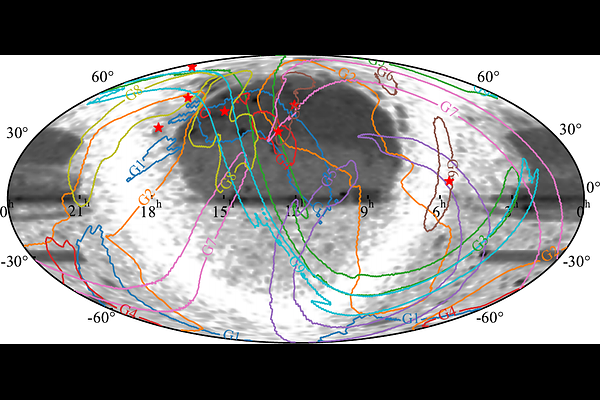Tracing the light: Identification for the optical counterpart candidates of binary black-holes during O3

Tracing the light: Identification for the optical counterpart candidates of binary black-holes during O3
Lei He, Zhengyan Liu, Rui Niu, Bingzhou Gao, Mingshen Zhou, Purun Zou, Runduo Liang, Wen Zhao, Ning Jiang, Zhen-Yi Cai, Zi-Gao Dai, Ye-Fei Yuan
AbstractThe accretion disks of active galactic nuclei (AGN) are widely considered the ideal environments for binary black hole (BBH) mergers and the only plausible sites for their electromagnetic (EM) counterparts. Graham et al.(2023) identified seven AGN flares that are potentially associated with gravitational-wave (GW) events detected by the LIGO-Virgo-KAGRA (LVK) Collaboration during the third observing run. In this article, utilizing an additional three years of Zwicky Transient Facility (ZTF) public data after their discovery, we conduct an updated analysis and find that only three flares can be identified. By implementing a joint analysis of optical and GW data through a Bayesian framework, we find two flares exhibit a strong correlation with GW events, with no secondary flares observed in their host AGN up to 2024 October 31. Combining these two most robust associations, we derive a Hubble constant measurement of $H_{0}= 72.1^{+23.9}_{-23.1} \ \mathrm{km \ s^{-1} Mpc^{-1}}$ and incorporating the multi-messenger event GW170817 improves the precision to $H_{0}=73.5^{+9.8}_{-6.9} \ \mathrm{km \ s^{-1} Mpc^{-1}}$. Both results are consistent with existing measurements reported in the literature.